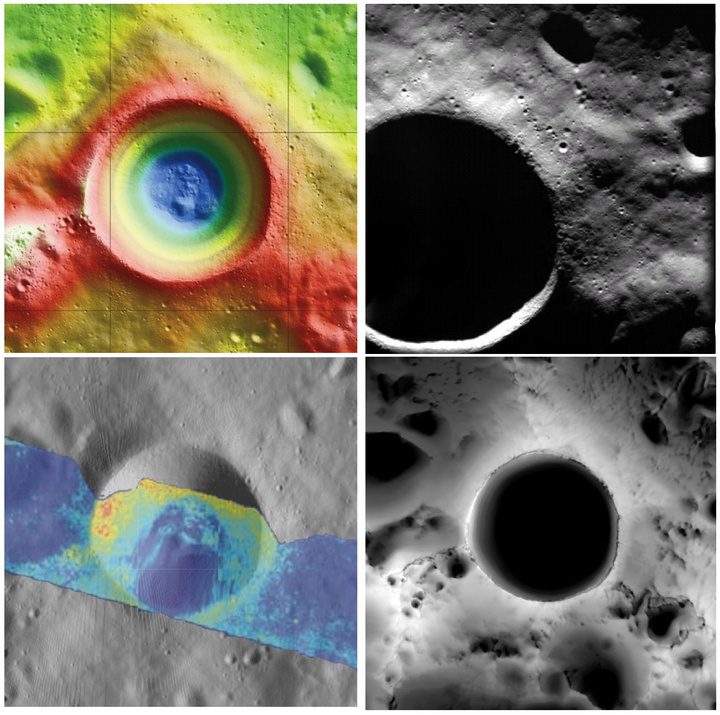The southernmost region of the Moon experiences prolonged periods of darkness due to its axial tilt. However, there are three areas of the Shackleton crater that receive sunlight. This makes them suitable locations for establishing future lunar bases.
Furthermore, the Shackleton crater is considered to have significant potential, as experts believe it may harbor water reserves that could support future lunar exploration missions.

China is preparing to land on one of the potential sites on the Moon, which NASA is also pursuing, namely the Shackleton crater near the Moon’s south pole. (Illustration: Smithsonianmag)
The location and potential biosphere characteristics of this area will enable astronauts to harness solar energy to power the base while investigating the crater’s area for potential water ice deposits awaiting exploration. Due to these special factors, NASA is also considering the Shackleton crater for its upcoming Artemis mission programs.
According to a recent study, China’s Chang’e 7 mission program is expected to land on the Shackleton crater at the Moon’s south pole along with a rover and a mini aerial probe. This mission may be launched in 2026.
The Chang’e-7 mission program will also incorporate various advanced instruments, including a seismometer, ground-penetrating radar, magnetometer, and spectrometer, along with many other exploratory devices to detect water ice and volatile components in the lunar soil, as well as to examine the morphology, composition, and structure of the lunar soil surrounding and within the Shackleton crater.
The mini aerial probe, together with the Lunar Soil Water Molecular Analyzer (LSWMA), will collect data on water molecules and hydrogen isotopes. Another device, the Lunar Neutron Gamma Spectrometer (LNGS), will be installed on the orbiter, and scientists will use it to determine the distribution and origin of water ice on the Moon.
It is known that China is also working to establish the International Lunar Research Station (ILRS) by 2030.





















































